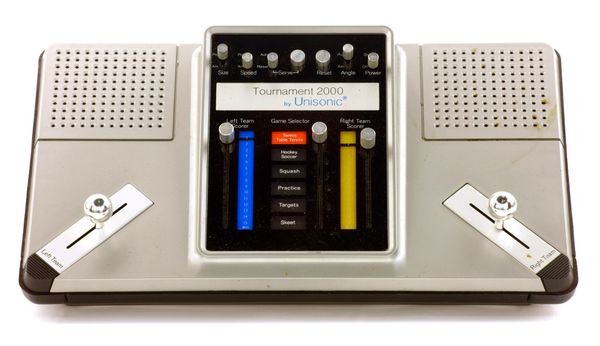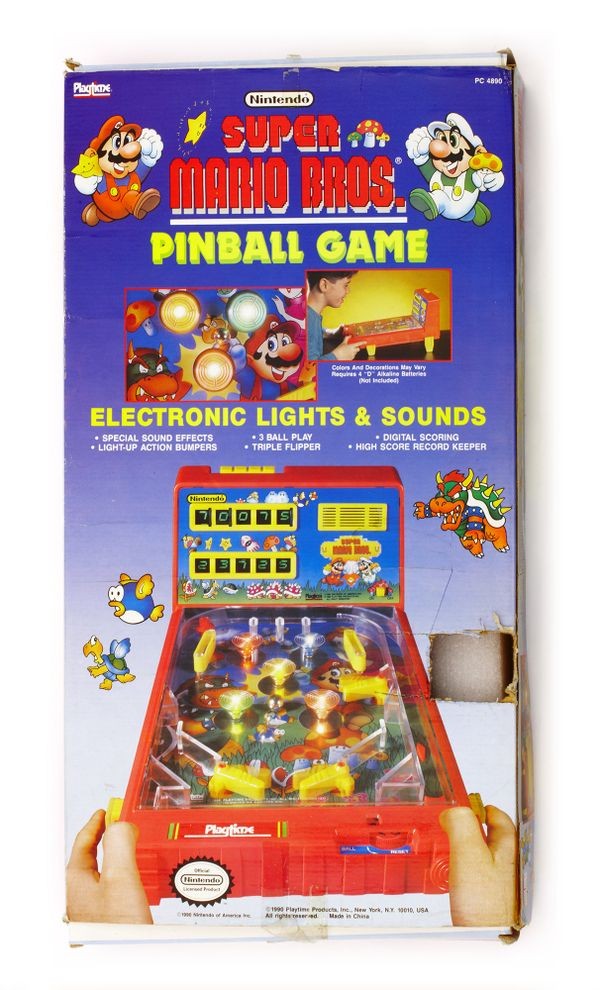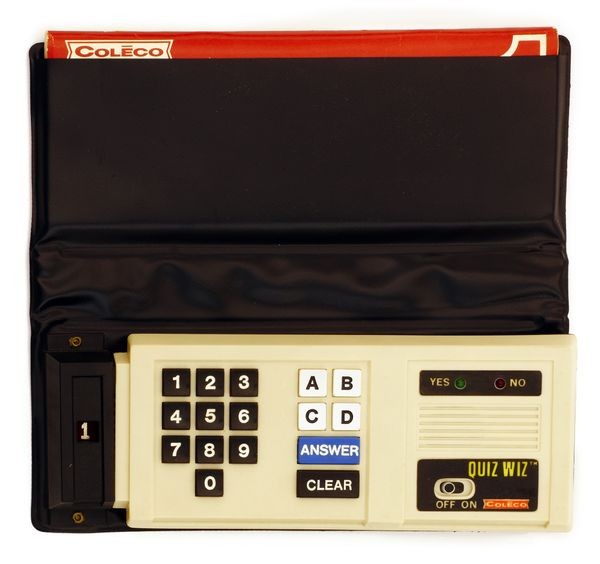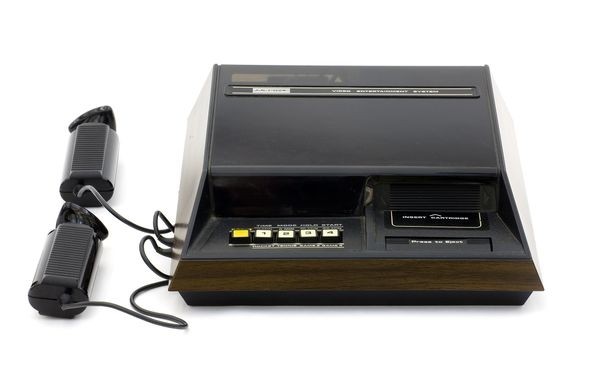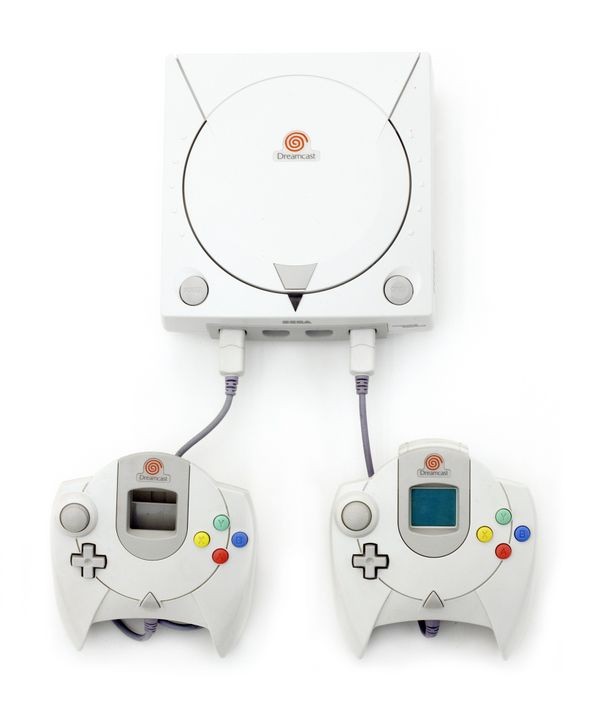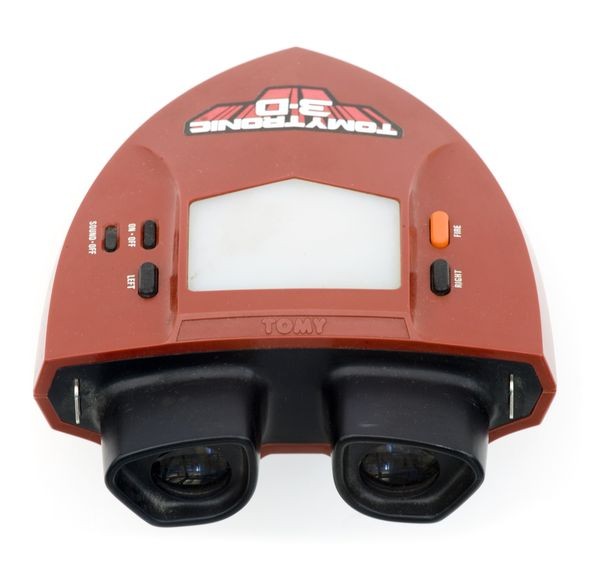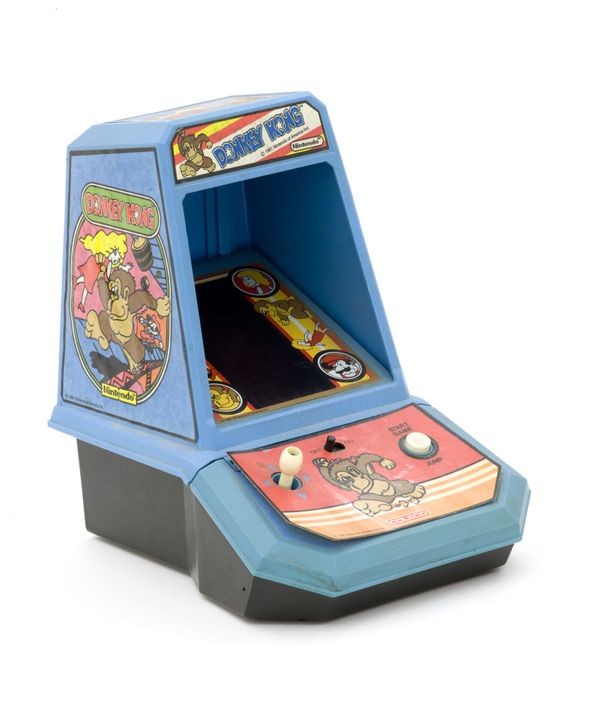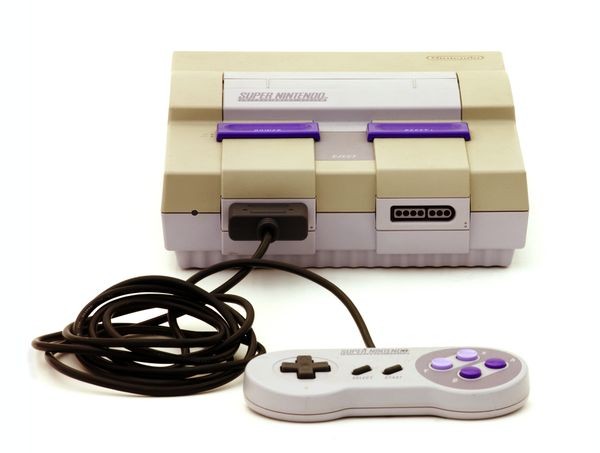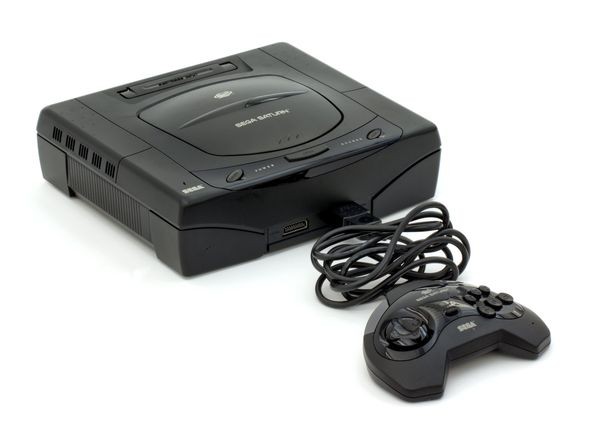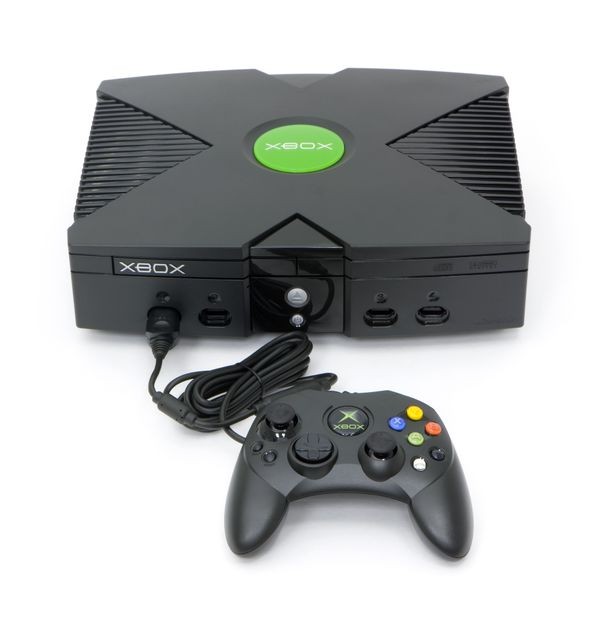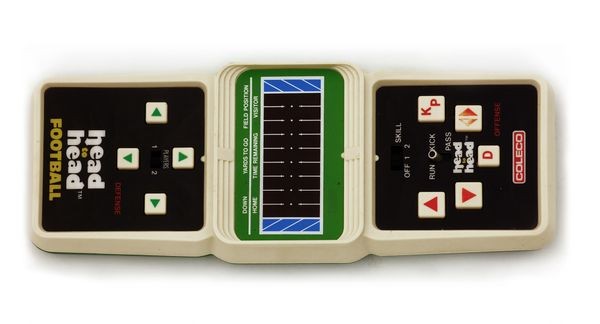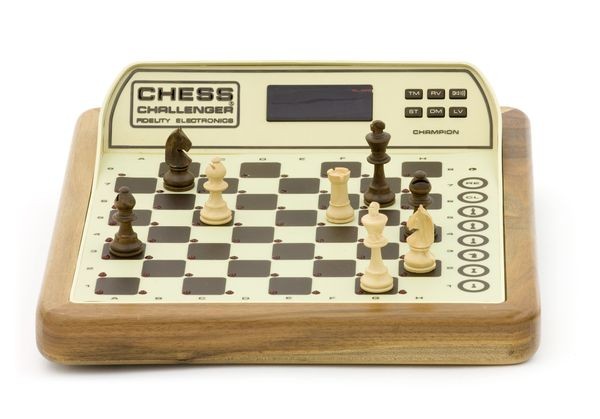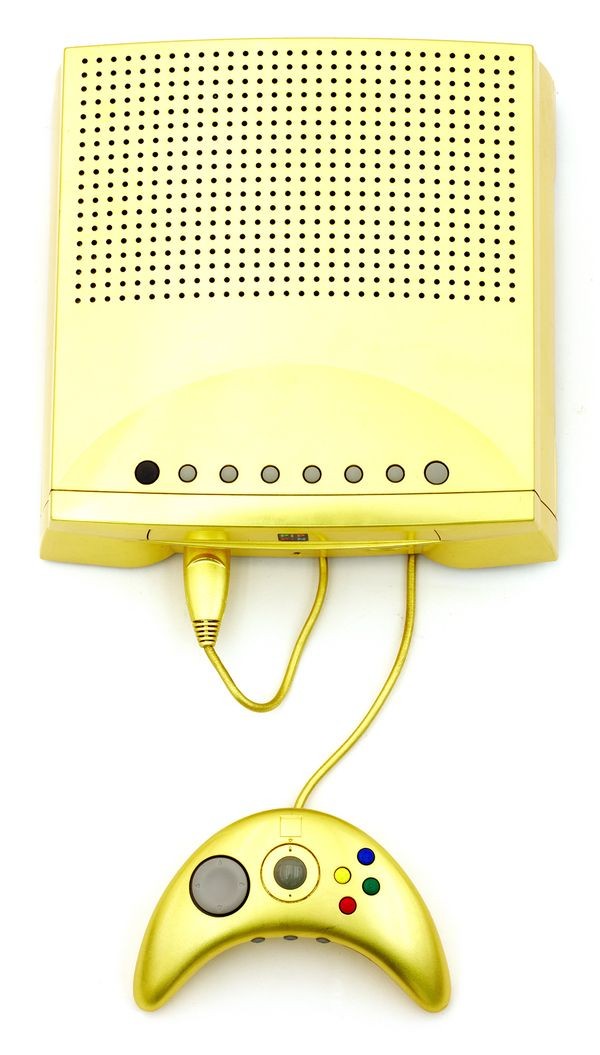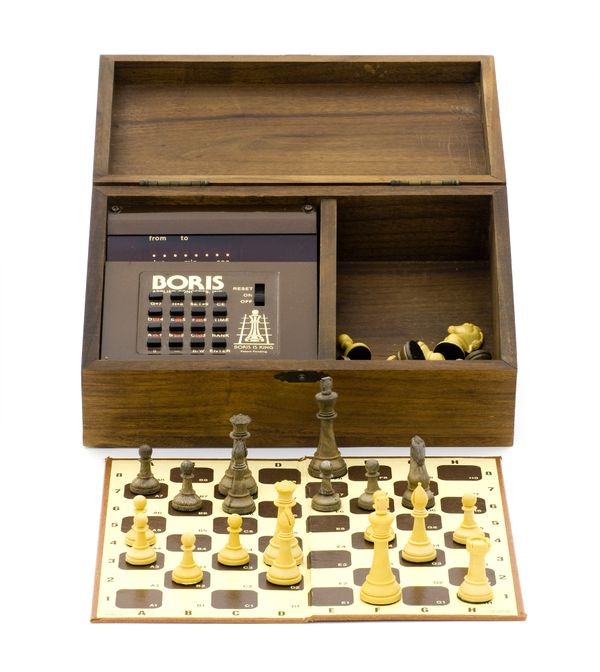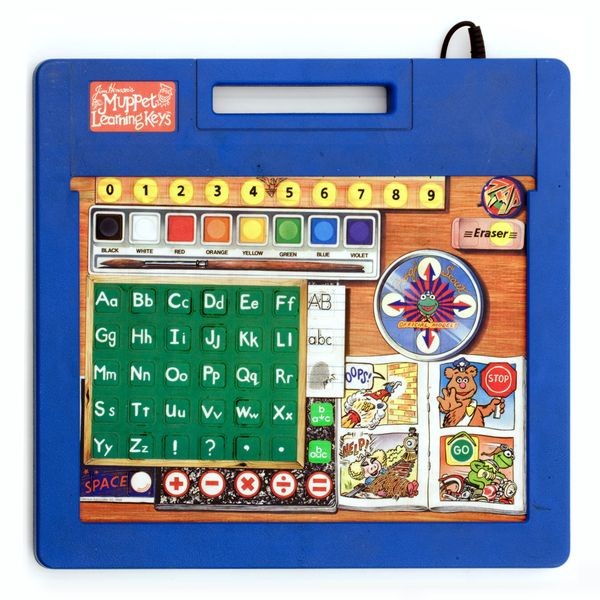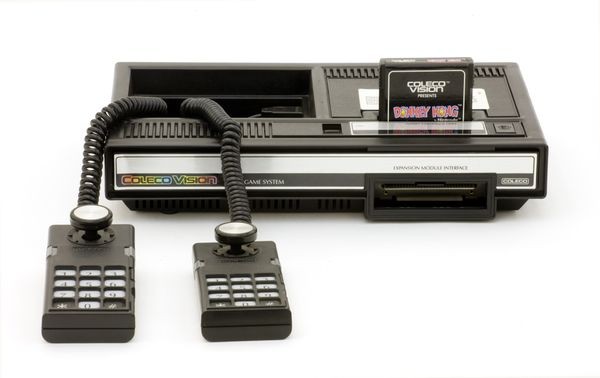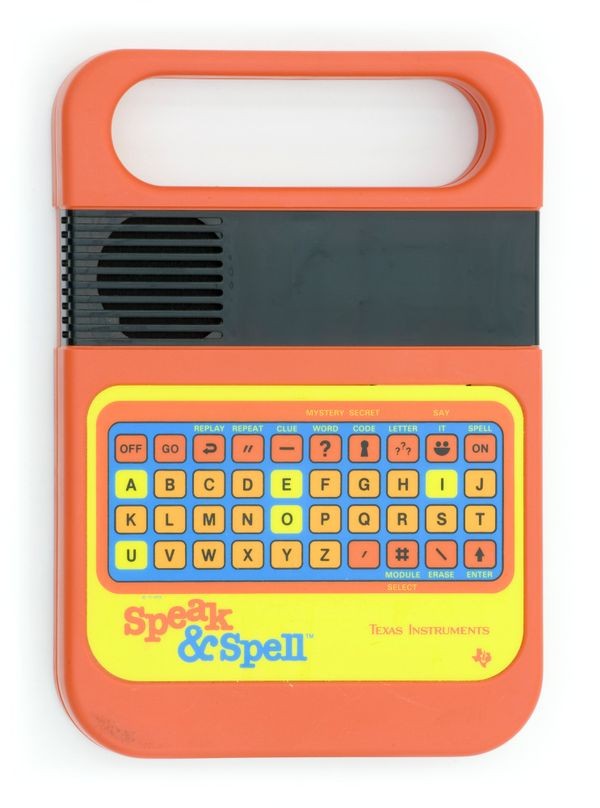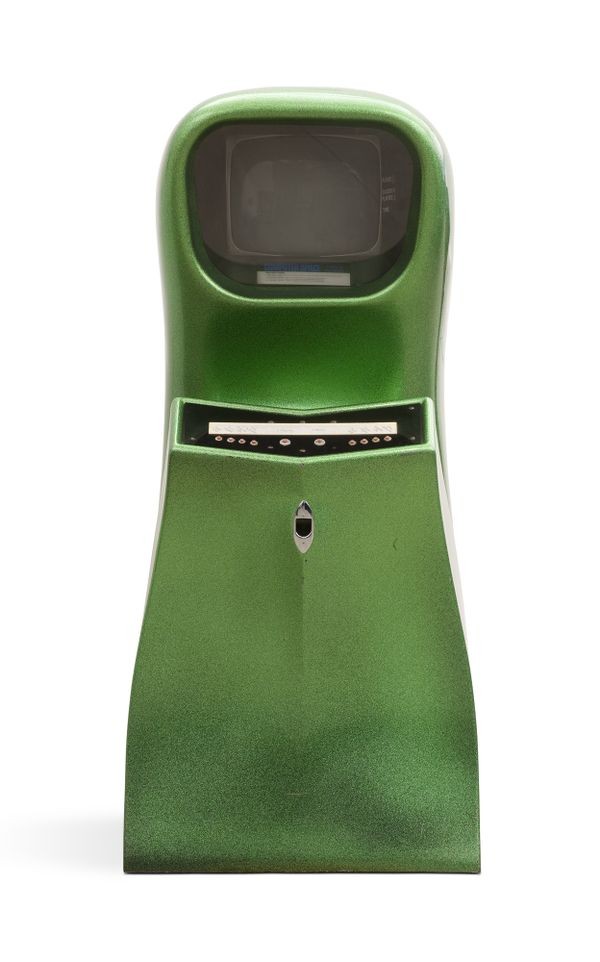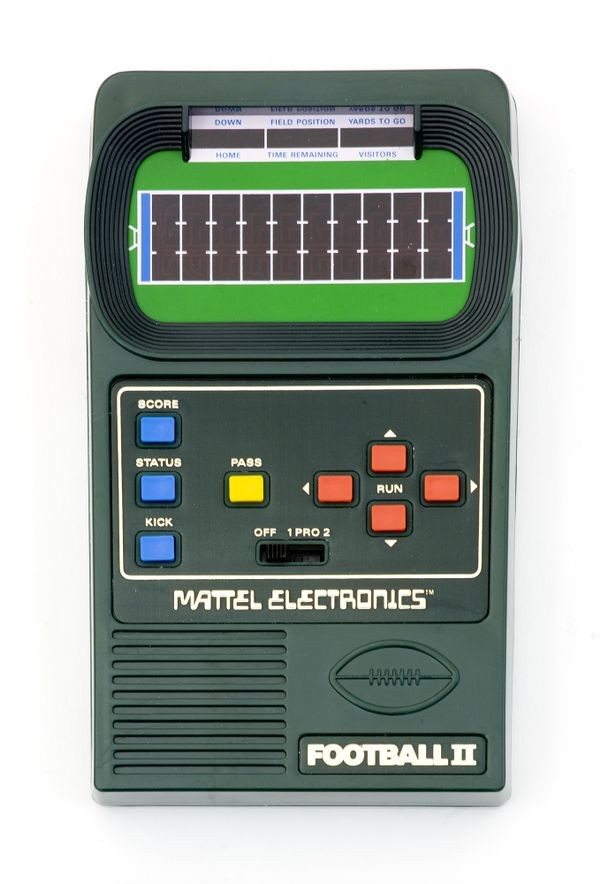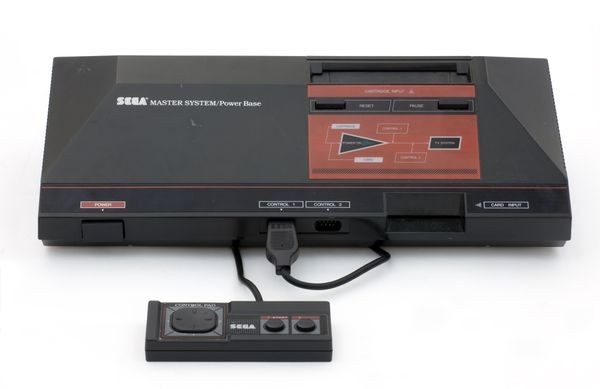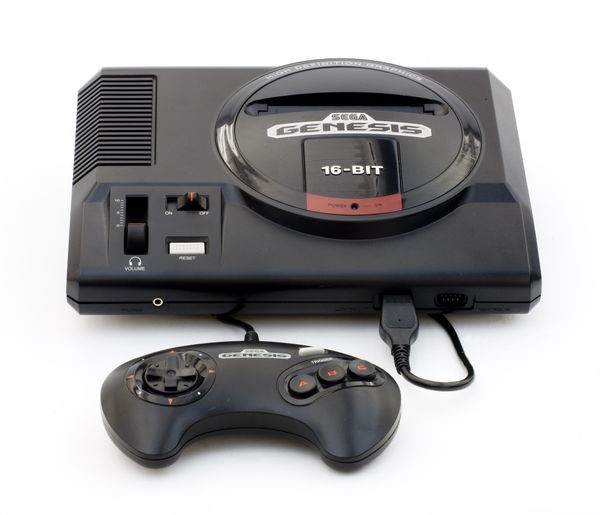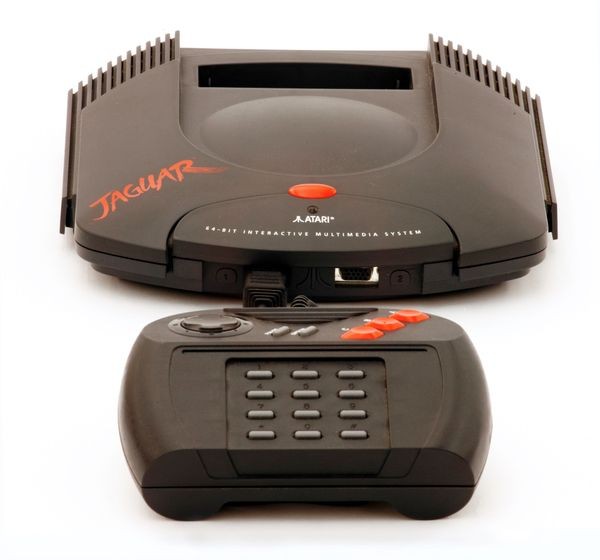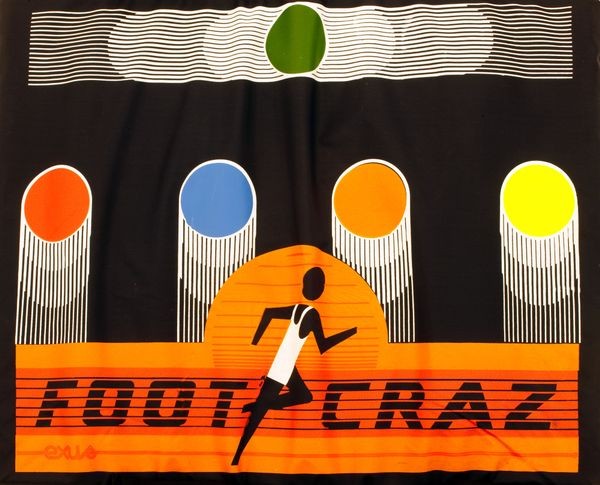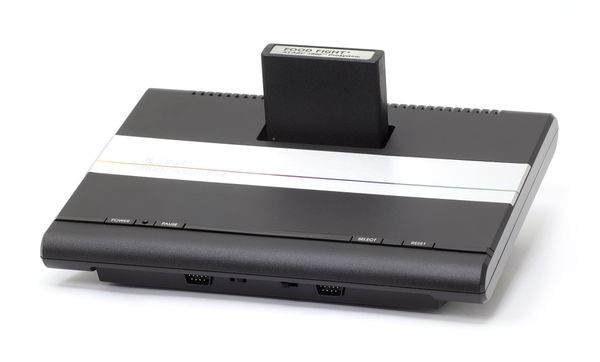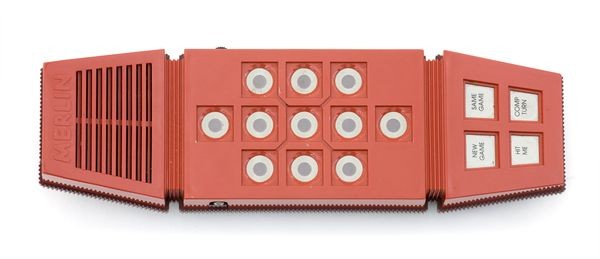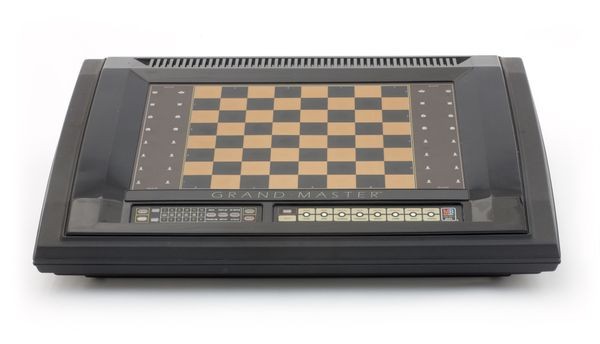Gallery of Games and Consoles
Tournament 2000 Game system
The success of Pong inspired many companies to flood the home market with similar products. The Tournament 2000 came with six games, including table tennis, hockey, and squash.
Super Mario Brothers Pinball Game
The success of Nintendo’s Mario Brothers video games led to a cavalcade of spin-off products. Nintendo licensed the Mario characters to other companies, so the popular plumber appeared on dozens of products ranging from stuffed animals and clothing to action figures and breakfast cereal.
View Artifact DetailQuiz Wiz: The Computer AnswerGame
Coleco was a leading manufacturer of handheld games, which were often re-branded and sold by other companies. The Quiz Wiz trivia game used cartridges that could be swapped to change the topic.
View Artifact DetailChannel F Video Entertainment System
This ambitious home gaming console was the first product to use the Fairchild F8 microprocessor, as well as the first gaming system to use swappable cartridges, which became the gold standard for over 20 years. Another innovation was a syndicated television program, TV POWWW, which allowed players to play Channel F games on the air over phone lines.
View Artifact DetailDreamcast video game system
Dreamcast was the first “sixth generation” home console, and pioneered the use of a built-in modem for internet gameplay. Nonetheless, the PlayStation 2, GameCube, and Xbox gaming systems all surpassed Dreamcast in sales, and it was the last piece of gaming hardware released by Sega.
View Artifact DetailVectrex Game Console
Vectrex differed from other 8-bit home gaming consoles that connected to a TV because it had a built-in vector graphics CRT monitor and was portable. The screen was black-and-white, but plastic screen overlays provided static color and decorative graphics. Vectrex, a casualty of the Video Game Crash of 1983, was discontinued in 1984.
View Artifact DetailTomytronic 3-D Sky Attack game
Tomy created specialized handheld games, including the Tomytronic, which let players look through eyepieces to get a realistic, almost three-dimensional image of the game. The Tomytronic line couldn’t survive the popularity of more general hand-held gaming systems like Game Boy.
View Artifact DetailDonkey Kong Table Game
Inexpensive tabletop versions of popular arcade and console games started to appear in the early 1980s. These had simplified graphics and sound, but were otherwise the same as the regular games.
View Artifact DetailSuper Nintendo Entertainment System
Super Nintendo built on the success of the original Nintendo by providing better graphics and sound, thanks to a 16-bit internal processor. Its game library included Donkey Kong Country, with the most realistic graphics of any console game up to that point, and Star Fox. Over 40 million Super Nintendos were sold between 1990 and 2003.
View Artifact DetailSega Saturn video game system
The Sega Saturn was a failure in the US market, but sold very well in Japan, perhaps because its advertising featured Judo master Segata Sanshiro beating up people who weren’t playing the Sega Saturn. Losses in the US led to the console being cancelled worldwide…and the premature introduction of Sega’s next console, Dreamcast.
View Artifact DetailXbox Video Game System
For years Microsoft had marketed successful single games like Flight Simulator, but it did not introduce a general game system until 2001. Xbox initially shipped with the game Halo, and was the first console in the US with an internal hard disk drive as standard. Although late to the market, Xbox overtook Nintendo for second place in the home console market, behind Sony’s PlayStation.
View Artifact DetailHead to Head Football
Coleco’s early hand-held games were designed for a single player, which made them ideal for kids on car trips. Head to Head Football, which allowed both single and doubles play, was re-branded and sold by other companies, including Sears.
View Artifact DetailSensory Chess Challenger
Fidelity Electronics created the first electronic chessboard in 1976. Players moved the chess pieces according to instructions on a display screen. At first, Chess Challenger was not very strong against experienced players, but it improved with each new machine in the series.
View Artifact DetailPippin game system
Apple Computer designed the Pippin for Japanese toy company Bandai as a low-cost computer that could also be a gaming system—as Atari had done successfully with its 400/800 systems. But Pippin was most often compared only to gaming consoles, so its $599 price seemed too high. It was not a success.
View Artifact DetailBoris Electronic Chess Computer
Some dedicated chess computers, starting in the late 1970s, analyzed the performance of their human opponents and provided feedback to help them improve their games. Boris would sometimes say, “I expected that” in response to a player’s move.
View Artifact DetailMuppet Learning Keys keyboard
Children as young as three could learn to interact with a computer using this Muppet-themed keyboard. The designer was Christopher Cerf, a musician who wrote and sang many of the songs on the Sesame Street TV show.
View Artifact DetailColecoVision Video Game System
This was Coleco’s first game system, following on the success of its Pong-like and handheld games. The version of Donkey Kong that came with the system is considered one of the best home translations of an arcade game.
View Artifact DetailNintendo 64 video game system
This 64-bit system was the last to use cartridges. Nintendo benefited from the library of characters and series created for its previous systems.
View Artifact DetailSpeak & Spell
This educational toy, based on TI’s research in synthetic speech, was designed to help children learn to spell and pronounce 200 commonly misspelled words. The first Speak & Spell used a TMS1000 4-bit microprocessor with a custom Digital Signal Processor (DSP) for voice synthesis. Some hobbyists, eager to use the synthesizer for other projects, purchased the $50 machines just to extract the DSP, which was unavailable as a separate component.
View Artifact DetailComputer Space video game
Nolan Bushnell developed this commercial version of the classic video game SpaceWar! nine years after it had been developed on the PDP-1 in 1962. Computer Space became the first commercial arcade video game. It pitted solo players against alien spaceships, or two competing players against each other. Although Computer Space sold poorly, it got high marks for its futuristic cabinet. Bushnell later founded Atari and Chuck E Cheese’s Pizza-Time Theaters.
View Artifact DetailElectronic Football II game
Light Emitting Diodes (LEDs) are cheap and use little battery power, making them a popular way to show the position of players in simulated sports games. Mattel sold many millions of its Electronic Football games.
View Artifact DetailBally Astrocade Professional Arcade game console
Dave Nutting designed a powerful graphics processor to pair with a Zilog Z80 microprocessor in this 1977 home game console. Originally called the “Bally Home Library Computer,” it was refocused on gaming applications just in time to fall victim to the 1983 video game market crash. It was taken off the market in 1985.
View Artifact DetailSega Master System Power Base
This 8-bit home game console was Sega’s response to the success of the Nintendo Entertainment System. Master System was first released as the Sega Mark III in Japan in 1985, then as the Sega Master System in North America in 1986. While never a top-seller in North America, it did very well in Brazil and Europe.
View Artifact DetailGenesis system console
Japan’s Sega MegaDrive was introduced in North America as Genesis in 1989, and was an immediate success. The release of Sonic the Hedgehog in 1991 finally created a character for Sega whose popularity could rival Nintendo’s Mario. The Genesis was Sega’s most successful console, and was one of the longest-lived consoles in history.
View Artifact DetailJaguar video game system
Atari returned to the gaming market with Jaguar, the first 64-bit gaming console. Jaguar was praised for its slate of games, including the first console version of the PC game Doom, but criticized for poor controller design. Atari had a hard time attracting third-party game developers, since by then most were exclusively tied to one of the other console makers. This was Atari’s last home console.
View Artifact DetailVideo Jogger
Games that also provide exercise make the time spent seem more worthwhile. Video Jogger had a pressure-sensitive Foot Craze Activity Pad that sent cartoon characters racing around a track. It was not successful, partly because the Atari 2600 it needed was in decline. But the idea lived on in products such as the Nintendo Power Pad, Dance Dance Revolution, and the Wii Fit.
View Artifact DetailAtari 7800 ProSystem game console
The 7800 was designed to address the shortcomings of the Atari 5200 gaming system. It was compatible with the earlier 2600 model—unlike the 5200—so older games still worked. Atari intended to introduce the 7800 in 1984, but the sale of the company by Warner Communications delayed release until 1986.
View Artifact DetailMerlin: The Electronic Wizard Game
Music Machine, one of the six games packaged with Merlin, allowed users to play their own music. Used that way, Merlin was one of the first home music synthesizers.
View Artifact DetailElectronic GrandMaster chess game
This chess-playing machine was part robot: magnets underneath moved real pieces for the computer, and the pressure-sensitive board could detect the human player’s move. The software, designed by chess expert David Levy’s company, was considered weak in the opening and closing, but a strong middle game earned it a 1550 chess rating. The game was marketed internationally—as “GrandMaster” in the US, “Phantom” in the UK, and “Milton” in Germany and France.
View Artifact Detail